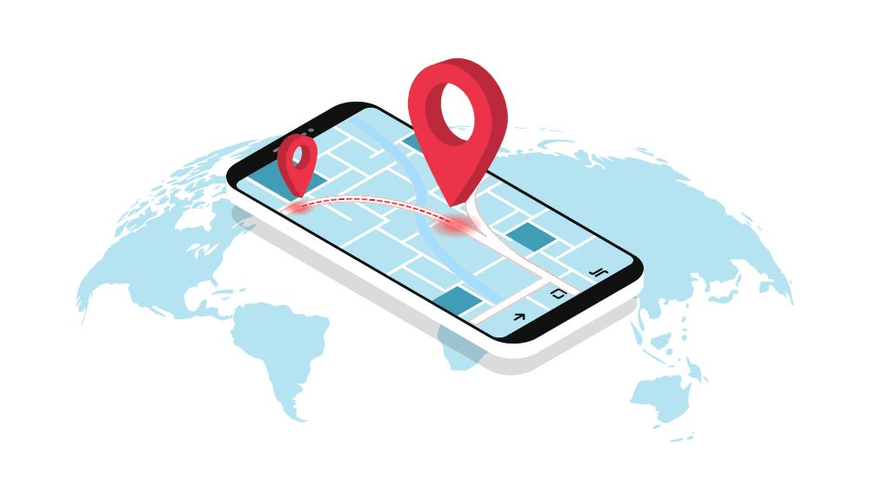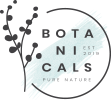Within a knowledge cloth, AI and ML convert passive metadata to energetic metadata by repeatedly analyzing metadata and then building a graph mannequin that is easy for users to understand. These AI and ML algorithms then use the results of this evaluation to optimize how they mechanically manage knowledge across the enterprise ecosystem. In this manner, energetic metadata helps to reduce back the need for manual actions when making ready and exploring knowledge.

Relationship extraction is the method of identifying and categorizing semantic relationships that occur between two entities in text, similar to who works for whom, what business line sells which product, what’s positioned in what place, and so on. Relationship extraction helps construct a information graph that represents the connections and interactions among entities, which permits semantic evaluation and reasoning. However, relationship extraction could be difficult because of the diversity and complexity of natural language.There are once more a quantity of approaches, together with rule-based, machine learning-based, or hybrid. Teradata QueryGrid, our high-speed, parallel information material system, delivers the sort of scalability, flexibility, integration, complete management and thorough governance enterprises need for their knowledge. Users can entry and work with data using their chosen tools, across a multi-cloud, hybrid cloud, or on-premises setting.
Everything You Need To Know About Fashionable Information Catalogs
Data fabrics may be confined to an utility, used to gather distributed data and may extend to all enterprise knowledge. This structure is composable, permitting IBM to fulfill shoppers wherever they’re in their information journey. Data fabric brings essential capabilities to a course of automation platform, because it connects knowledge units throughout numerous techniques, whether they’re on-premises or in the cloud. Look for a process automation platform that also provides low- or no-code connectors so you possibly can link these systems (like CRM, ERP, and database applications) with out building the connections from scratch.
Other data management architectures like information warehouses and knowledge lakes only support analytical knowledge. When information adjustments, or is “mutable,” you start to see cracks in these architectural methods, as they can solely give you the static knowledge that was extracted from particular person methods. This leads to information latency and impacts the usefulness of the data in your application. These different knowledge architectures additionally nonetheless require a ton of builders to extract, rework, and cargo in knowledge in order that it can be used. Organizations all over the place are utilizing a data fabric method to expand knowledge access and create a single, secure, and complete view of knowledge throughout their enterprises. In order to beat these enterprise information administration challenges, what many organizations need is a knowledge cloth.
- Analyst firm Gartner lists “data fabric” as a “Top strategic know-how trend” and predicts that by 2024, 25% of information administration distributors will provide a whole framework for knowledge fabric – up from 5% at present.
- What are the business benefits of using an information fabric in your enterprise data structure strategy?
- That’s one cause why knowledge cloth is a must-have capability in a course of automation platform.
- Relationship extraction helps construct a information graph that represents the connections and interactions amongst entities, which enables semantic evaluation and reasoning.
- Data cloth is designed to scale horizontally, allowing organizations to handle rising knowledge volumes and workloads.
- With a unified data and AI platform, the IBM® Global Chief Data Office increased its business pipeline by USD 5 billion in three years.
It is normally created at design time and maintained as documentation of items like information schema and business definitions. Active metadata is dynamic and provides altering insights into parameters like frequency of access and information high quality. Each of the tools listed above could be mixed to create a complete knowledge material structure that meets your organization’s needs by method of scalability, flexibility, and maintenance. Enable customers to entry, analyze, and visualize information through self-service analytics tools, similar to Tableau, Power BI, or Looker. Ensure that these instruments are built-in with the data material to supply a seamless expertise.
Knowledge Material For Analytics And Operations
The knowledge cloth architecture stitches these environments together to create a unified view of information. Data management teams are addressing these challenges head on with data material solutions. They are leveraging them to unify their disparate data techniques, embed governance, strengthen security and privacy measures, and supply more data accessibility to staff, significantly their business customers.
Whether you’ve a Data Mesh or Data Fabric architecture model, knowledge lineage is instrumental for getting maximum benefits of every when it comes to long-term utilization and administration of both. SOLIXCloud Enterprise Archiving delivers a totally managed low-cost, scalable, elastic, secure, and compliant knowledge administration resolution for all enterprise knowledge. New technologies, new sorts of knowledge and new platforms are being added all the time. And it’s not simple to change and bolster information administration methods with each shift in know-how.

Ensure information privacy and compliance by implementing sturdy information governance policies and safety measures, similar to data masking, encryption, and access management mechanisms. The knowledge fabric should be capable of ingest data from varied https://www.globalcloudteam.com/ sources, corresponding to transactional databases, third-party APIs, log information, and streaming data. In this text, we’ll discover the assorted elements of the info material architecture and understand how to deploy it.
Metadata Administration
These knowledge integration efforts via data materials permit for extra holistic, data-centric decision-making. Historically, an enterprise could have had different data platforms aligned to particular strains of business. For instance, you may need a HR information platform, a supply chain data platform, and a customer information platform, which house knowledge in different and separate environments regardless of potential overlaps.

That’s one cause why data fabric is a must-have functionality in a process automation platform. Conversely, an information fabric thrives in conditions the place information is constantly changing, such as applications that contain associate data-sharing. Because the information is virtualized and connected directly to the supply techniques, you’ll find a way to easily read/write to those techniques. This single supply of information then can provide you an entire view of your business—a holy grail that many teams have chased for years seeking higher enterprise outcomes. The K2view Data Product Platform delivers a real-time, trusted, and holistic view of any business entity to any consuming purposes, knowledge lakes, or data warehouses. The use instances of the platform are therefore quite a few, and span many departments within the enterprise.
Enterprise Data Preparation makes it easy to simplify and velocity up data preparation. The AI-powered, Intelligent Data Catalog lets you discover, perceive and prepare knowledge. Leverage applied sciences like Apache Spark, Apache Flink, or Apache Beam for processing large volumes of knowledge effectively. The marketplace for knowledge material software has been estimated at $1.1 billion in 2020, with a projected progress to $3.7 billion annually by 2026.
Because information cloth architectures are highly automated, they can carry out duties that when required important guide effort, corresponding to integrating information sources and analyzing the quality of their data. The monetary services company first identifies key domains based mostly on its core enterprise functions. For occasion, the “Banking Operations” domain staff handles knowledge related to customer transactions, account balances, and department operations, while the “Loan Management” domain group offers with mortgage functions, approvals, and reimbursement data. By maintaining these elements in thoughts during the deployment course of, you possibly can create a sturdy, safe, and scalable information fabric structure that empowers your group to derive priceless insights from its data assets.
A knowledge material standardizes and democratizes data entry in today’s advanced, distributed, and cloud-based environments. When we look at this in the context of Data Mesh and Data Fabric, it is clear that knowledge lineage can function within both architecture sorts. Especially within the context of information governance and compliance, data lineage makes positive that no matter your information architecture type or mannequin, you’ll be able to see the place your knowledge flows and that your data remains in compliance. In this blog submit, we’ll break down Data Mesh vs. Data Fabric and how these relate to lineage.
A data fabric structure delivers governed knowledge across hybrid and multi-cloud environments to fuel innovation and progress. The Appian AI Process Platform contains every thing you should design, automate, and optimize even the most complex processes, from begin to end. The world’s most innovative organizations belief Appian to improve their workflows, unify information, and optimize operations—resulting in better progress and superior customer experiences. With a knowledge lake, you have to carry all the info out of each system and cargo it all into one new system (the lake). The data sits in the lake till you do transformation and analysis work at a later date.
For occasion, the “Loan Management” team can use the “Credit Scoring Model” provided by the “Risk Management” area to assess mortgage applications. Each domain team takes ownership of knowledge high quality and adheres to data Data Mesh and Data Fabric governance insurance policies. They implement knowledge validation checks, information lineage monitoring, and information monitoring to make sure the accuracy and reliability of their data products.
Using a visible, drag-and-drop builder, microservices may be rapidly customized and orchestrated to assist any operational use case. This strategy lends itself to treating data as a product and supporting mesh architectures.Users or tokens that need access to a microservice are mechanically assigned a role, which defines the extent of data access they’ve. Once a microservice is deployed, K2view Data Fabric controls authentication and authorization so that person access is correctly restricted. A mature information material architecture built upon the preceding requirements performs a pivotal position in supporting the development of artificial intelligence (AI) for companies by providing a stable foundation for harnessing the ability of data. The knowledge fabric’s assist for data exploration, information preparation, and seamless integration empowers businesses to harness the transformative and generative energy of AI.
As the diagram above illustrates, as information is provisioned from sources to customers, it’s cataloged, ready, enriched to offer insights and proposals, orchestrated, and delivered. Listen to this webinar as IBM and Gartner discuss the lengthy run and significance of data fabric and its core components. Discover new opportunities on your journey enterprise, ask in regards to the integration of certain technology, and naturally – help others by sharing your experience. Gartner has highlighted this capability as foundational to the data cloth idea. Flexible consumption-based pricing enables you to scale and leverage capabilities to fulfill your wants.
Over time, new data management practices have emerged for managing these complex data points, together with information warehouses, data lakes, and knowledge mesh—but for most modern companies with complex information buildings, they’re simply not sufficient. By leveraging data providers and APIs, information materials pull together information from legacy systems, data lakes, information warehouses, sql databases, and apps, offering a holistic view into business efficiency. In contrast to those particular person knowledge storage methods, it aims to create more fluidity throughout information environments, attempting to counteract the issue of data gravity—i.e. A information fabric abstracts away the technological complexities engaged for knowledge motion, transformation and integration, making all data obtainable throughout the enterprise. Data pipeline orchestration is the driving drive of data cloth creation that brings all of the elements together. This is the method of integrating data sources with two or more applications or companies to populate the knowledge graph initially and replace it often thereafter.











Leave a comment